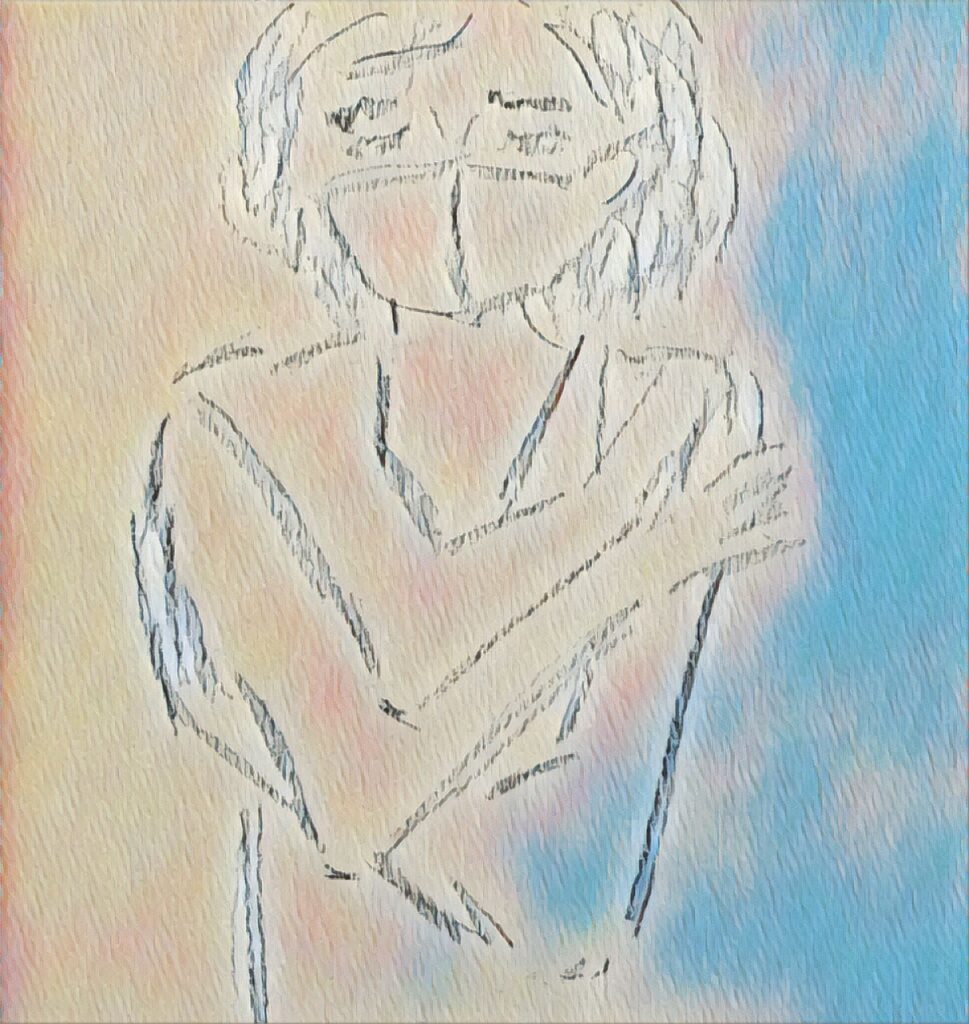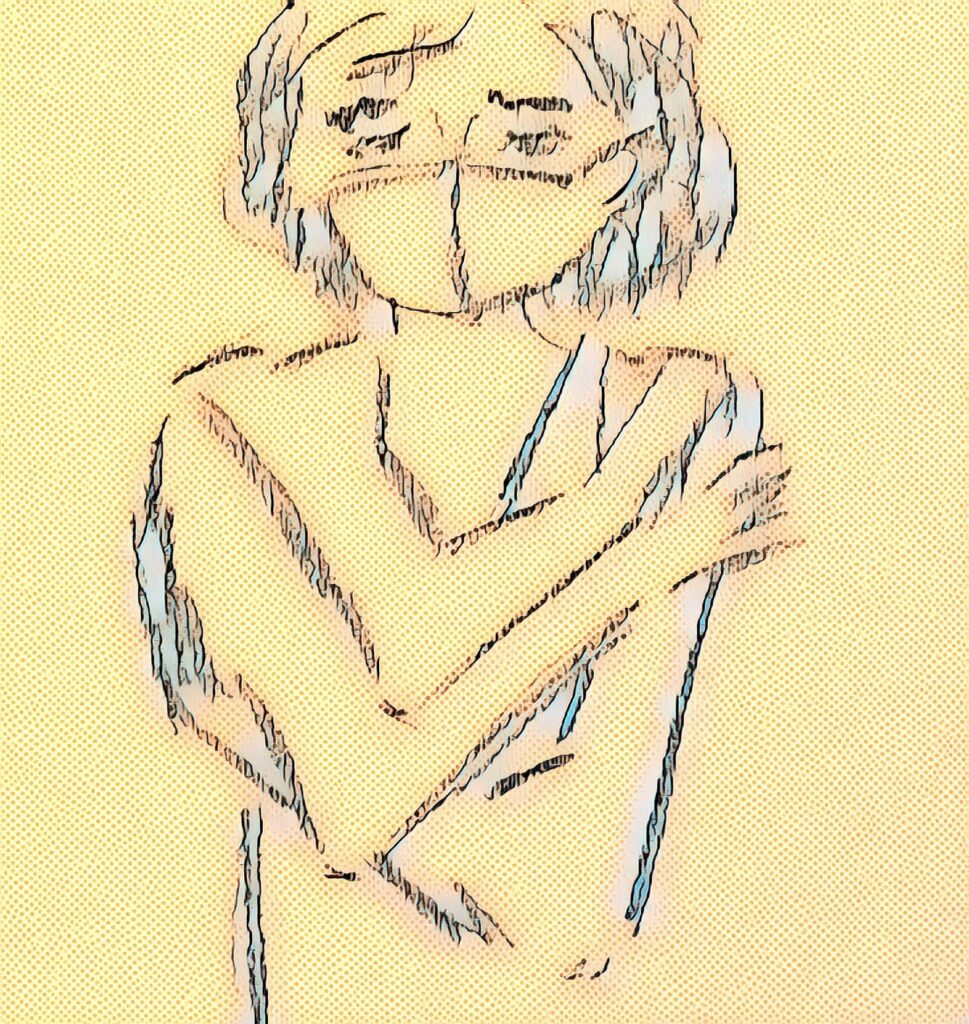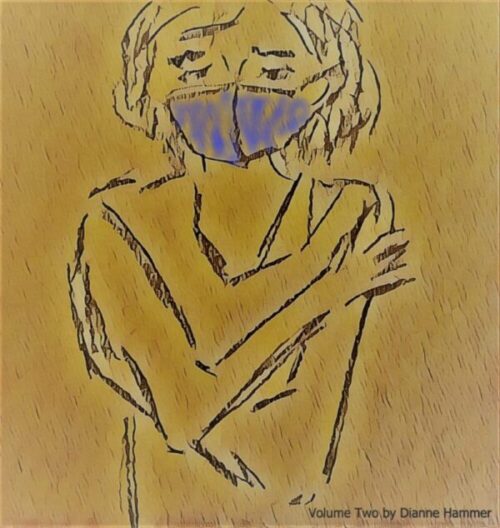Is the Pandemic Affecting How Our Brains Interpret Touch & Human Connection?
I grew up in the 1970s and ‘80s as part of a Swedish-American family in a suburban home just beyond the city limits of St. Paul, Minnesota. The last sibling to arrive, I joined my older sister, two brothers and parents in a small, single-story house on a cul de sac of other starter homes built in the 1950s.
In my generation, suburban homes did not necessarily equate to more space. We lived lightly crammed together, six people sharing one bathroom. But that didn’t seem particularly unusual to me when I was young. Nor did it seem odd that there wasn’t a lot of physical intimacy in our household, despite the fact we lived in such close quarters. We were Scandinavians, after all. And however you grow up feels normal.
Affection was more a pat on the shoulder than a warm, enveloping hug, and the most intimacy I ever witnessed between my parents was a quick peck on the lips.
My childhood family culture definitely comprised inherited stoicism from Swedish immigrants of previous generations. For family photos growing up, we stood formally with arms to our sides, not touching one another. And in family gatherings and social situations, we could be found – and can be seen even today – standing or sitting in conversation with our arms crossed in front of us out of longstanding habit.
I find myself quite often still assuming this posture when I’m with others. (Or even sitting alone at my computer, apparently; I just caught myself doing it.) I’ve read enough about the topic to know this is not welcoming body language, so I have to watch myself when I’m in social or business situations. I don’t want to seem unwelcoming. But it does feel protective, cozy and comfortable, marking just a bit of a boundary for my personal space. It feels normal because I’ve been doing it for so long.
Despite this stoic upbringing and its leftover habits, I’ve always considered myself to be a pretty touchy-feely person. During social greetings I would be the first person to suggest a hug rather than a handshake, I’ve always loved cuddling, and in the earlier days of my marriage I couldn’t fall asleep unless my husband and I were touching skin-on-skin in some fashion. Spooning, or hands reaching for a shoulder, a leg.
Touch was a good thing.
After I was sexually assaulted in 2018, my brain rewired.
I experienced an almost constant barrage of unwanted thoughts and film clips of the assault in my head. But along with experiencing that and other effects, I also was reprogrammed to expect the unexpected, to always be on alert for incoming danger, for the other shoe to drop, for a peripheral or six-o’clock attack. My skin felt electric, like a million small sensors had been installed and activated during those minutes of the assault. I emerged from the trauma changed.
The affectionate me was gone.
It took several weeks, though, for me to notice this, that I wasn’t touching and hugging my people as I usually would.
I remember sitting down on the burgundy couch in our living room, one of my favorite spots in the whole world. It’s where I have my first cup of coffee in the morning, where I read, where I journal, where I sometimes watch too much TV. It’s my comfort and thinking place. I plopped myself down and really examined this new characteristic I saw in myself and grabbed my journal to work it out in words, emotions, and then with tears.
I realized I just didn’t need or want hugs anymore. Touch no longer felt like a “positive” thing.
Of course, I knew this wasn’t “normal.”

So pretty quickly, I began hugging my people again because it seemed socially appropriate and relationship-appropriate and made me feel more like how I used to be. But I didn’t desire it or crave it. I would, in fact, actually have to prompt myself in certain situations to remember to do it because it didn’t come naturally, as it used to.
My brain had calculated that touch was not safe, that touch could be really scary (instead of loving) and lead to something horrible, with my boundaries violated, my life threatened.
My brain learned that those scary things we read about in the news and we think will never happen to us, actually can happen. And my brain could not be convinced something bad wouldn’t happen again.
I found I needed a stronger boundary of personal space to feel safe. Especially in the throes of post-traumatic stress disorder (PTSD), where achieving a sense of calm is more difficult, I think I needed to do what I could to feel a little relaxed because being hyper-vigilant all the time was exhausting. It’s hard to explain how tiring that was. My body was constantly on alert for danger, even when there was none.
When I’m out walking alone, even now, most of the time I can’t relax because my brain is on alert for something that might jump out at me or come flying at me – a person, a dog, a car, a wild animal, a flying projectile, you name it.
This effect from the trauma interfered with my ability to connect with people, and, of course, affected the physical intimacy in my marriage.
It didn’t really improve signficantly until early this year, nearly two years after the assault, when I started to feel things shift and felt a NEED to cuddle next to my husband, and the very beginnings of sexual desire.
And it wasn’t until the COVID-19 pandemic was in full swing for two months that I started to actually CRAVE hugs, feeling a tremendous deficit from having to be physically apart from so many people in my life I care about and love, because of stay-at-home orders, and especially on the heels of post-assault isolation. I could feel it in my gut and in my chest and in my arms – this ache for physical connection. I grieved not being able to hug and cuddle my daughter and grandson, and not being able to greet my dear friends with a hug.
Touch is awesome. Touch is necessary.
My brain is beginning to heal.
But just in time for this new stage in my healing, there’s still this huge new trauma that’s continuing to send not only me the message that close contact and touch aren’t safe.
It’s a message that’s being sent to the entire world.
I’ve written previously about this – the global, shared trauma that the COVID-19 pandemic has created.
Read more here:
https://diannehammer.com/2020/06/something-feels-familiar-a-pandemic-deja-vu-and-the-value-of-a-shared-experience/
We now each have a membership in this shared pandemic experience in which the world overnight has become a scary and unsafe place because of a threat that is invisible, that we can’t even see coming at us in our peripheral vision. This has left us in a position where many of us are staying away from one another because of risk to lives and having to be cautious about physical affection with those outside of our household or “bubble.”
We step back from people instead of toward them.
Unprecedented levels of caution persist about the possible threat of being too close to others for too long, unprotected, especially because we are still trying to better understand why some people get severely ill from the virus and die, while others barely notice the symptoms. To many, the situation feels like Russian roulette.
This has been going on for many months now, and the mental health issues arising from the needed physical distancing and isolation are becoming obvious. I hear this from many friends and family members.
As part of examining the far-reaching effects of this pandemic, we need to have serious conversations and consideration within our families, among our friends, in healthcare and mental-health circles, and at national and international levels about how lack of touch or possible fear associations with it will affect our own personal development and human development in general in the long-term.
We step back from people instead of toward them.
Speaking from experience, I think this is a problem that deserves immediate attention. Our brains are learning, and perhaps being rewired, to associate others –even our loved ones – with danger. To associate hugs and touch with trepidation and fear, instead of spontaneous affection and love.
I think we are in for compounding mental-health problems because of this unprecedented sort of “reprogramming” of human relationships.
In particular, I believe we need to address how our children, whose brains are still developing, are receiving the message about danger from physical touch because I worry this could affect how they approach life and relationships as they grow up.
That is the type of impact trauma can have.

Not everyone is affected by trauma the same way. Some who experience a traumatic situation do not go on to experience long-term symptoms. Also, many people do not view COVID-19 as a serious threat, so maybe the impact on them will be somewhat different. I don’t know. But I think a large percentage of people could have problems to some degree with human connection and trust and touch and personal space after the COVID-19 crisis is “over” – however that’s defined.
So here are my thoughts about this:
- We should have more, deliberate discussions with our children, reminding them this acute situation is temporary, that touch (the kind desired by both parties, given and received with permission) is a good, loving thing and important for people. They hopefully should witness and experience positive, appropriate affection in their household or bubble, as well.
- I think we should be more mindful of trying to experience and offer as much (again, appropriate) human touch as possible when we are in safe situations so we don’t get used to the reduced lack of touch.
- For our mental health, many of us will need and want to brave more of the “safe” hugs experts are instructing us about, where we wear masks, hold our breaths, turn our heads opposite and feel the needed connection of a warm bear hug.
- Finally, I think we must have honest discussions about risk vs. our mental health/quality of life. Touch is important, physical connection is important, human connection is vital. We need to address the cognitive dissonance between what we know we need to do to be safe from COVID-19 versus what we know we need as humans in order to “survive” from a mental-health aspect. This is a real issue, and we have to acknowledge it and not keep kicking the conversation down the road. I’m not saying go out and do unsafe things, but that as a society we can’t ignore the problem.
I don’t have the answers to all of this, and I’m certainly not a mental-health professional. I’m a Survivor, and I can write and explain about how trauma has affected me and try to extrapolate how others might be affected by this global, shared trauma as we redefine our new family cultures and try to maximize healing and good outcomes.
Meanwhile, for me and my individual trauma, I continue to heal through the pandemic, though the reduced physical contact does affect me, so I have to work at that part of my healing with intention.
I can also say, however, that long after my hugging response is fully back in groove in whatever new-normal we end up with, I’ll probably always continue to cross my arms in front of me to mark my personal space as well. I am Scandinavian, after all. It’s the legacy of my first family and my heritage.
It is part of who I am.
Please subscribe to this blog to continue following my healing journey. You can also follow me on social media at:
Instagram: @amiddleagedsurvivor
Facebook: @amiddledagedsurvivor
Substack: @amiddleagedsurvivor
Wishing you love, peace and sparks of joy wherever you are on your healing journey. It is my wish with all that I do and all that I write about for you to know that you are not alone.
Warmly,

I love the artwork here, too, and appreciate your getting the conversation started. It’ll be a GOOD day when we’re in each other’s space and embracing once more. Meantime, sending a giant hug from MN!
Can you feel touch through writing? If so, I felt a great hug from you by reading this. Thank you my friend.
Dianne, your writing is beautiful, and, as Jen noted, the artwork is so evocative.
My first impulse is to hug a friend or shake the hand of someone I’m meeting, and I have to remind myself not to do that now. In this new, “don’t touch” landscape, a COVID touch encounter from earlier this summer sticks out. I saw someone who isn’t quite a friend but is more than an acquaintance. He was walking toward me and, as I automatically veered away to put at least 6′ between us while giving him a “hey” and a wave, he said, “I’ve had COVID, you don’t have to worry about getting it from me.” I stopped and said, “Oh, well, I had a COVID test a few days ago that came out negative so I am safe too.” We spontaneously approached each other with open arms and hugged for a good 10 or 20 seconds, and it felt so wonderfully normal to be able to do that. He became a friend in that moment.
PREACH. I have been especially worried about the pandemic’s impact on our mental and emotional health, for exactly these reasons. And as a person who works with youngster’s who are in critical windows of development, I am constantly trying to figure how to mitigate the impact.
Very powerful picture in what you wrote: ” My skin felt electric, like a million small sensors had been installed and activated during those minutes of the assault.”
LOVE the artwork associated with this post.
Thank you for sharing your thoughts with us!
Thank you! Any added ideas on how to mitigate this with children (and adults)?